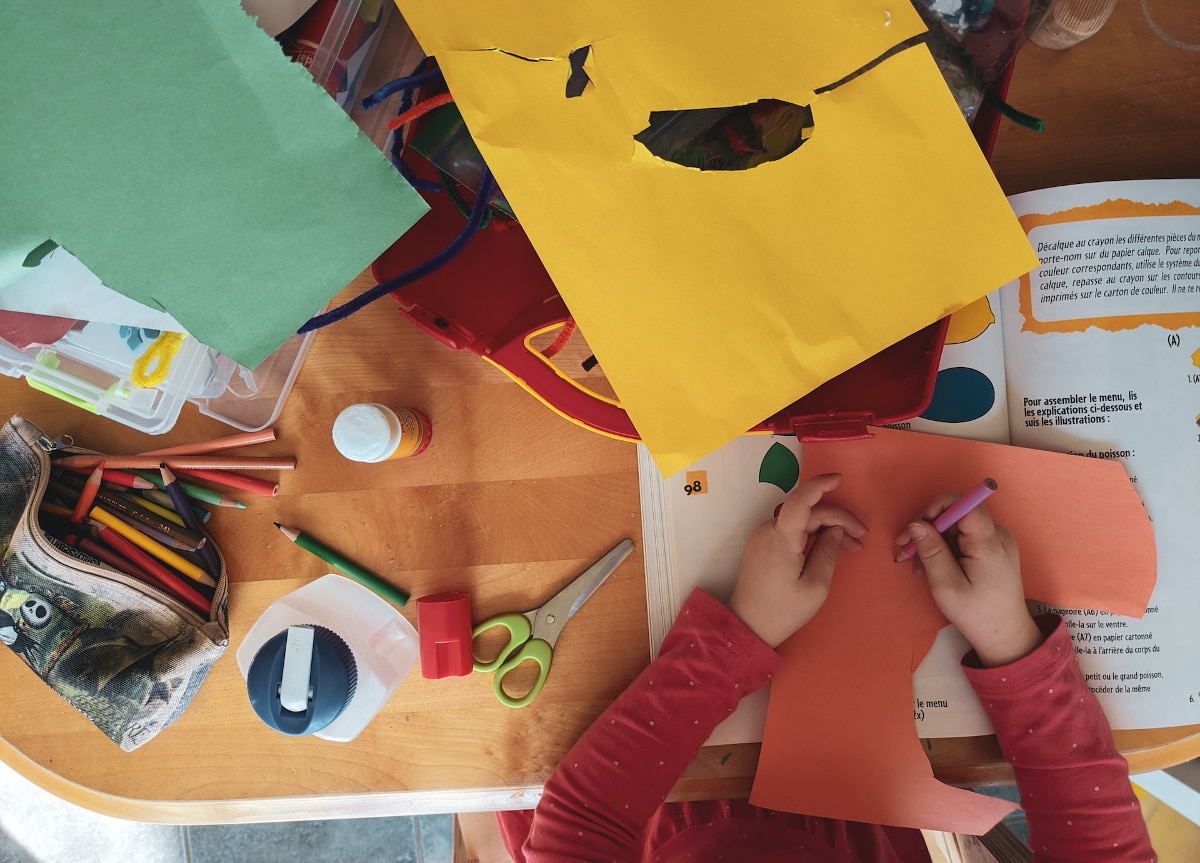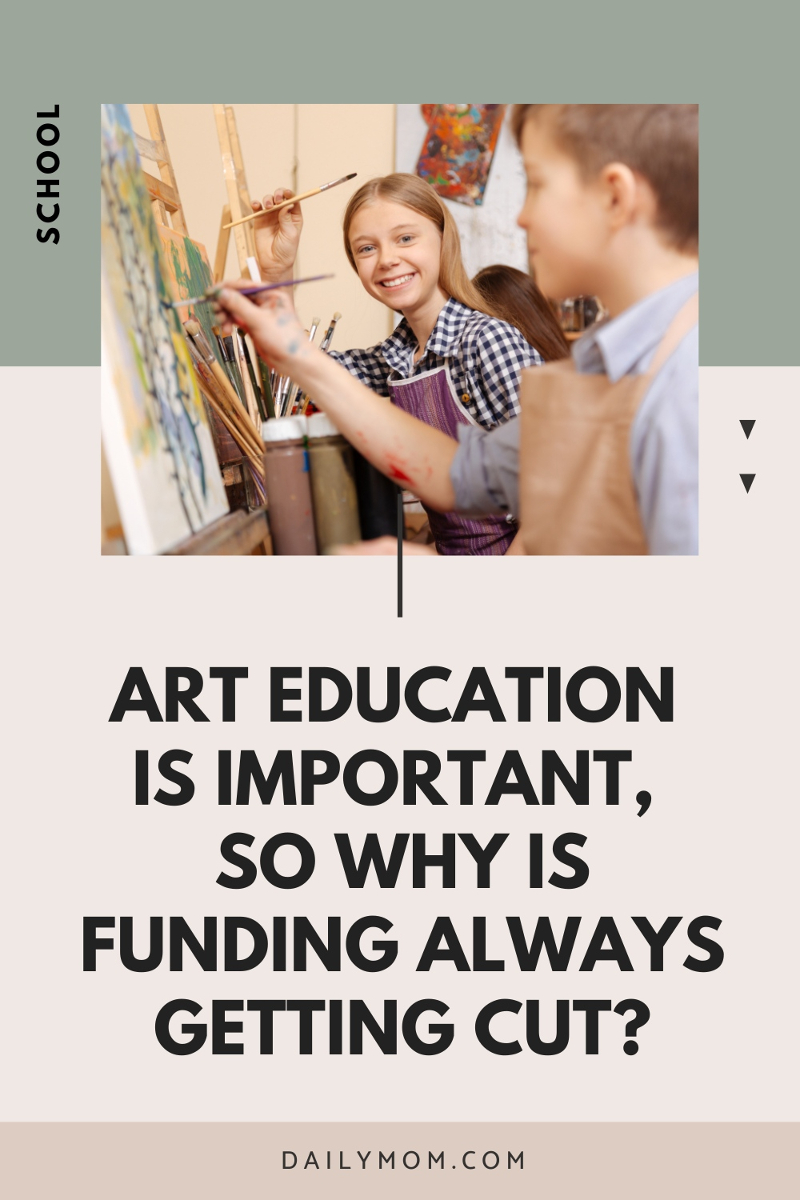It is no secret that art education is important for kids. It is beneficial in all kinds of ways, helping with not only creativity and imagination but also academics. Study upon study and article after article show how important art education is for kids throughout elementary school and beyond. The findings are pretty conclusive. With that being the case, why do school districts continue to cut funding for art education programs in school or nearly cut the arts entirely? It seems, at least in part, to be a case of misplaced priorities and misguided thinking.
The Benefits of Art Education
Art education is an important component of a student’s learning because it not only teaches creativity and imagination, it teaches things like communication, focus, cooperation, fine motor skills, and emotional intelligence. Art is also a great way to process experiences and feelings. Plus, it also helps students focus better in their academic classes as well as increases their academic performance. A number of research studies show that students involved in some form of the arts, whether that be visual art, dance, music, theater, etc., perform better in math, reading, and writing.
Students involved in arts education programs tend to show a greater capacity for higher-ordered thinking skills like analyzing and problem-solving. There has even been evidence that students involved in art education perform better on standardized tests than their peers. When looking at high school students, students who participate in art education score higher on the SAT.

READ MORE: SIMPLE STRATEGIES TO SUPPORT CREATIVITY AT HOME
Visual arts classes help to develop crucial motor skills when using scissors, markers, and paintbrushes. The same is true with language skills. By identifying colors, shapes, and descriptive words, and then discussing them in class, students develop social skills and increase their vocabulary. It is not just visual art that is important. Music education is also important. It connects both hemispheres of the brain, creating developments in listening and communication skills. In fact, children who practice a musical instrument for just 30 minutes a week have more developed brains than their non-musical peers. Art education programs have also both helped decrease dropout rates and increase graduation rates.
Being exposed to the arts also teaches students about their and other cultures. Learning to appreciate different types of art teaches kids to appreciate different cultures and perspectives. When students are exposed to art education from an early age, they learn to think about and appreciate different cultures and become better, more tolerant global citizens.
READ MORE: SIMPLE 5-MINUTE CRAFTS THAT WILL DELIGHT PARENTS AND KIDS
Funding Cuts to the Arts
Starting in the mid-1980s, the number of students receiving art education has decreased dramatically. This decrease seems to be linked to the emphasis and accountability placed on school districts for high student achievement on standardized tests. The emphasis on test scores caused schools to move their resources to subjects that were being tested. In some school districts, these cuts resulted in portions of art education programs being completely cut.
The argument seems to be that more emphasis needs to be put on things like reading and math since those subjects are the ones in which students are tested. However, the irony in this belief lies in the fact that funding and emphasizing art education could actually help increase those test scores. Focusing so much on standardized testing has proven over the years not to be all that effective.

Besides depriving kids of exposure to the arts, the problem with cutting art education funding is that it also deprives them of understanding and appreciating different types of artistic expression and the cultural significance of art. People who are not exposed to art, especially through art education, are less likely to find art interesting or rewarding. This means they are probably less likely to invest their time or resources in the arts.
Cutting arts funding leads to fewer people being exposed to art and fewer people finding art to be important, which will potentially cause more cuts to arts funding because the more adults there are who do not see the importance of art, the more people there are who will support cutting the arts.
READ MORE: 10 TIPS FOR CHOOSING THE BEST SCHOOLS FOR YOUR CHILD
Some Good News
In the last seven years or so, there has been a shift back towards funding the arts in schools. The Every Student Succeeds Act (ESSA) became law in December 2015. It rewrote the federal education law previously known as “No Child Left Behind.” The goal of ESSA is to provide students with fair and equal opportunities to achieve a high-quality education. The law includes several provisions that ensure students have access to art education. A major change in the new law is that it lists music and the arts alongside reading, math, and other subjects in the federal definition of a well-rounded education.
Along with federal investments, there are a number of organizations that provide grants to schools to supplement funding for the arts. While all states and all school districts do not fund art education programs equally, it is a start in the right direction.
Students who are exposed to the arts are more successful in school. Art education actually enhances academic achievement. Beyond that, they learn communication skills, emotional intelligence, and cultural appreciation. Whether or not you live in a district that champions the arts or not, you can promote the arts at home by visiting museums, going to live performances, and listening to different types of music. That way your kids can experience the benefits of the arts even if it is not in school.
WANT TO READ MORE?
Check out How Mind Wandering And Creativity Can Positively Impact Your Child for more advice, tips, and tricks.
CONNECT WITH DAILY MOM
💖 NEWSLETTER: DAILY READS IN YOUR INBOX 💖
Sign up to receive our picks for the best things to do, see and buy so you can relax and focus on more important tasks! Let us help you be the best version of yourself you can be!
BE SOCIAL WITH US
📌 LOVE IT? PIN IT!📌

Photo Credit: unsplash.com









































